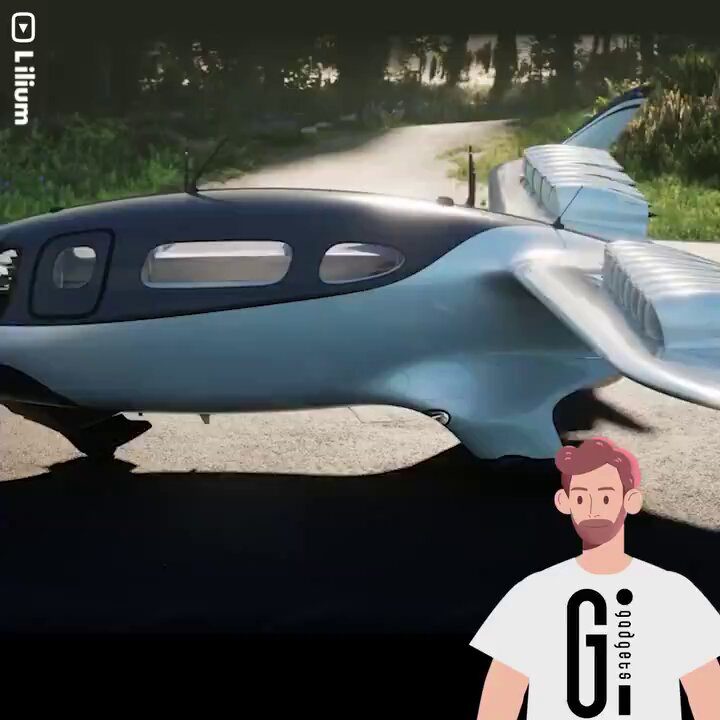The Lilium Jet, an electric vertical takeoff and landing (eVTOL) aircraft, represents a significant advancement in urban air mobility. Developed by Lilium, a German startup, this innovative aircraft aims to revolutionize the way we think about transportation in urban areas. With the growing interest in sustainable and efficient transportation solutions, the Lilium Jet stands out as a beacon of technological innovation.
The Rise of eVTOL Technology
Electric vertical takeoff and landing (eVTOL) technology has been gaining traction in recent years, with several companies entering the race to develop the most efficient and reliable aircraft. The Lilium Jet is one of the frontrunners in this emerging market, boasting a sleek design and advanced engineering that promises to make urban air travel a reality.
eVTOL aircraft are designed to take off and land vertically, much like a helicopter, but with the added benefits of electric propulsion. This makes them quieter, more environmentally friendly, and potentially more cost-effective than traditional helicopters. The Lilium Jet, in particular, is designed to offer a range of up to 300 kilometers (186 miles) on a single charge, making it suitable for both urban and regional travel.
Key Features of the Lilium Jet
The Lilium Jet is a five-seater aircraft that combines the best of both worlds: the vertical takeoff and landing capabilities of a helicopter and the speed and efficiency of a fixed-wing aircraft. Some of its key features include:
- Electric Propulsion: The Lilium Jet is powered by 36 electric ducted fans, which provide both lift and thrust. This allows for a smooth and quiet flight experience, with zero emissions.
- High Speed: The aircraft can reach speeds of up to 300 km/h (186 mph), making it a fast and efficient mode of transportation for urban and regional travel.
- Vertical Takeoff and Landing: The ability to take off and land vertically means that the Lilium Jet can operate in densely populated urban areas without the need for large runways.
- Safety: The Lilium Jet is designed with multiple redundant systems to ensure safety and reliability. This includes redundant power sources, control systems, and flight control surfaces.
The Competitive Landscape
The eVTOL market is becoming increasingly competitive, with several companies vying for a share of this emerging industry. Some of the notable competitors include:
- Joby Aviation: Joby is developing a hydrogen-electric eVTOL aircraft for urban and intercity transportation. Their unique selling proposition includes a hydrogen-electric range extender for longer flights and partnerships with Uber and Delta Airlines. Read more
- Volocopter: This German startup is also making strides in the eVTOL market, with plans to launch a 5-seater model by 2027. Volocopter has secured funding for certification and is currently raising the next round for operations and aircraft delivery. Read more
- Supernal (Hyundai Motor Group): Hyundai’s eVTOL business, Supernal, aims to launch commercial operations by 2028. Their focus is on suburban to inner-city travel, leveraging Hyundai’s expertise in automotive manufacturing. Read more
- The ePlane Company: An Indian startup developing eVTOL aircraft and drones with varying payload capacities. They aim to have a prototype ready by March 2025. Read more
Potential Impact on Urban Mobility
The introduction of eVTOL aircraft like the Lilium Jet has the potential to transform urban mobility. By providing a fast, efficient, and environmentally friendly mode of transportation, eVTOLs can help reduce traffic congestion and lower carbon emissions in cities. Additionally, the ability to take off and land vertically means that these aircraft can operate in areas with limited space, making them ideal for urban environments.
Several cities around the world are already exploring the potential of eVTOL technology. For example, Sarla Aviation plans to launch electric flying taxis in Bengaluru, India, to reduce travel time and vehicular pollution. The service aims to connect Bengaluru Airport with Electronics City, cutting travel time from three hours to just 19 minutes. Read more
Challenges and Future Prospects
While the potential benefits of eVTOL technology are significant, there are also several challenges that need to be addressed. These include:
- Regulatory Hurdles: Obtaining certification from aviation authorities is a major challenge for eVTOL developers. The FAA and other regulatory bodies are still developing the necessary frameworks to ensure the safety and reliability of these aircraft.
- Infrastructure Development: Building the necessary infrastructure, such as vertiports and charging stations, is crucial for the widespread adoption of eVTOL technology.
- Public Acceptance: Gaining public trust and acceptance is essential for the success of eVTOL aircraft. This includes addressing concerns about safety, noise pollution, and the environmental impact of battery production and disposal.
Despite these challenges, the future of eVTOL technology looks promising. With continued advancements in electric propulsion and battery technology, eVTOL aircraft like the Lilium Jet have the potential to revolutionize urban transportation and pave the way for a more sustainable and efficient future.
For more information on the latest developments in eVTOL technology, check out the following articles:
- Joby Aviation’s hydrogen-electric aircraft
- Volocopter’s commercial debut plans
- Hyundai’s Supernal eVTOL business
- The ePlane Company’s prototype development
- Sarla Aviation’s electric flying taxis in Bengaluru
Check out more AI tools.
Elevate Guest Experience with RoomGenie
Textify Analytics – Affordable Insights at the Speed of AI
